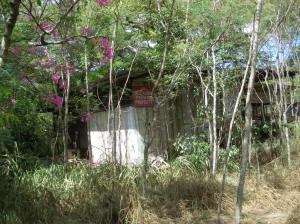NATIONAL PARK SERVICE COMPLETES DRAFT STUDY OF HONOULIULI THAT HIRONO HELPED TO COMMISSION WITH INOUYE IN 2009
WASHINGTON, D.C. – Senator Mazie K. Hirono applauded yesterday’s announcement by the National Park Service that Honouliuli Internment Camp has been identified for potential inclusion as a National Historic Site or National Monument into the National Park System. The study that led to this announcement, the Honouliuli Internment Camp Special Resources Study Act of 2009, was requested by Senator Daniel K. Inouye as part of the Interior Appropriations bill in 2009. A stand-alone bill was also introduced by Senator Inouye in the 111th Congress, with Hirono introducing the companion bill in the House of Representatives. Senator Daniel Akaka and Congressman Neil Abercrombie were cosponsors of the bill.
“I am pleased the National Park Service is moving forward to help preserve and protect the historic Honouliuli Internment Camp. It is important not just to the thousands of Japanese Americans from Hawaii who were sent to internment camps in the islands or the U.S. mainland, but also for all Americans,” said Hirono. “It is timely that this study comes as we celebrate Asian Pacific American Heritage Month, a time to recognize the contributions of Asian Americans and Pacific Islanders in the United States.”
Of the 17 sites assessed in the Honouliuli study relating to internment in Hawaii, the Honouliuli Internment Camp was determined to be a viable addition to the National Park System. This proposal will be open for public comment through July 15, 2014. The National Park Service will also host a series of eight meetings throughout Hawaii and one virtual meeting during the comment period. After the public comment period closes, Congress will be given a final report identifying a course of action from the Secretary of Interior.
Hirono visited Honouliuli Internment Camp on August 28, 2009 and was briefed by Brian Niiya of the Japanese Cultural Center of Hawaii.


Hirono made the following remarks on April 23, 2009 upon the introduction of the Honouliuli Internment Camp Special Resources Study Act of 2009:
Madam speaker,
I rise today to introduce a bill to authorize a special resources study of the World War II-era Honouliuli Internment Camp site in the State of Hawaii.
Unlike much of the mainland United States, Japanese Americans in Hawaii were not subjected to the mass roundups experienced by Americans of Japanese ancestry who lived on the West Coast of the U.S. mainland. Executive Order 9066, which called for removal of Japanese Americans from restricted areas, was not enforced to the same degree in Hawaii. Forcing all of Hawaii's Japanese American population into camps was simply not practical as they made up some 40 percent of the population at the time.
Executive Order 9066 put Hawaii under martial law. Interestingly, even before the attack on Pearl Harbor, the FBI had a “custodial detention list” of 337 people in Hawaii marked for arrest if America went to war with Japan. On December 7, 1941, the day Pearl Harbor was attacked, the FBI and the Army ordered the internment of everyone on the “custodial detention list.”
Most of these initial internees were “consular agents,” persons who worked on a volunteer basis to assist other Japanese in filling out reports of birth, marriage, and death to be sent back to the emigrants' original villages in Japan. Many of these volunteer “consular agents” were long-time residents of Hawaii but were not citizens because they were not born in Hawaii. At the time, Japanese immigrants were barred from becoming naturalized U.S. citizens on the basis of race. None of these “consular agents” were ever charged with espionage or sabotage. Shinto and Buddhists priests, language teachers, and community leaders were also rounded up and put in the camps.
Honouliuli Internment Camp was the largest and last-closed of the eight detention centers that operated in Hawaii. Honouliuli was also used as a prisoner of war camp. Each of the major islands had internment facilities for a period of time. Some 1,200 Japanese Americans and 100 Americans of Italian or German descent were interned in Hawaii between December 7, 1941, and September 14, 1945. Many were initially held in Hawaii and then transferred to internment camps on the U.S. mainland.
The story of the internments in Hawaii is not well known. Most people in Hawaii are not even aware of this history. Archeological reconnaissance surveys of the Honouliuli Camp site have been conducted with the support of the Japanese Cultural Center of Hawaii, Conservation Fund, National Park Service, National Trust for Historic Preservation and the University of Hawaii. The landowner, Monsanto, has also been supportive.
The Honouliuli site, which is located in a gulch in an agricultural area on the island of Oahu, still contains many remnants of the camp. The special resource study authorized by this bill will evaluate the Honouliuli site, as well as associated sites on Oahu and other islands, regarding its significance in the history of World War II; in relation to the forcible internment of Japanese Americans, Italian Americans, and German Americans; and for its physical historic resources.
One of the things I am most proud about America is our willingness to examine painful and often shameful periods of our past. The experience of Hawaii in relation to Executive Order 9066 has not really been told before. The proposed resource study will provide a map of how we might move forward in preserving and interpreting the historical record of this period.
I urge my colleagues to join me in supporting this legislation.